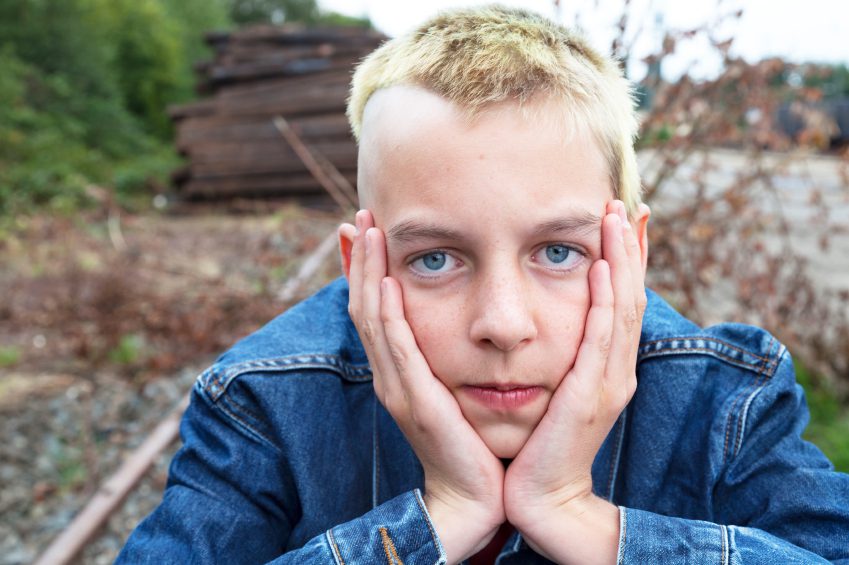Managing Anger: It’s All About RESPECT

Posted in: Teenagers, You & Your Family
Topics: Behavioral Issues, Relationships
Anger is an emotion hard-wired into the brain. We all get angry. Sometimes it seems as if our brains don’t have a choice; certain things just simply tick us off. But, anger as an emotion has never hurt anyone—it’s what we do with our anger that can be destructive.
When is the last time you got angry at someone you really believed was treating you with respect? You didn’t. Anger is an emotion designed to change the behavior of someone else. We get angry when we want someone to do something different, to either start doing something, or stop doing something. But, being respected feels great, so why would we want to change that?
We all have basically the same brain, but teenagers have a brain that is still maturing. During the teenage years, the part of the brain responsible for emotions and impulses is actually more in charge than the part of the brain responsible for thinking, problem-solving, executing a plan, and anticipating the consequence of that plan. So, kids may do and say things without really anticipating the potential outcome.
But, parents do have a brain that can more accurately anticipate the future. We all know what happens when a kid is the target of our anger. That kid will eventually withdraw, or get angry right back at you. And, two angry brains are rarely a good thing.
So, here are my seven steps to outsmart and defuse our most dangerous emotion. The first three steps speak to how to manage your anger. The next four relate to managing someone else’s anger. If you think about it, it’s not always your anger that gets in the way of success; often times, it’s someone else’s anger.
Managing Your Own Anger
- Recognize rage. Recognition is a thinking function. Once you realize you’re angry, you can begin to take charge of this primal emotion. Let’s say your kid is angry with you, or that you’re angry with your kid. The first thing is to remember the definition of anger: Anger is an emotion designed to change the behavior of someone else. What do you or your kid want to see done differently? Anger itself has a range, which we typically describe using words like: irritated, annoyed, frustrated, enraged, postal, pissed. If you want to, create your own anger scale from 1-10, with 10 being the angriest you can imagine. (Hint: Anything over 5 increases the risk of aggression, the enactment of anger.)
- Envision envy. We become angry when we think someone has more than we do. A kid may get angry over a curfew because it implies that her parents have more power. Parents may get angry because the kid whose diaper they used to change now wants nothing to do with them, and instead just wants to spend time with friends. Ask yourself, are you angry because you’re envious? If you want, make a list of things that elicit envy, then use your anger scale to relate a number to each.
- Sense suspicion. The flipside of envy is suspicion. If I think someone has more than me, that person may think I’m going to try and take something to level the playing field. A parent may become suspicious that her kid will break curfew, and a kid may become suspicious that a curfew implies the parent does not trust him. If you want, make a list of things that elicit suspicion, then use your anger scale to relate a number to each.
Remember that if you’re doing this, the likelihood is that everyone else is as well.
Managing Someone Else’s Anger
- Project peace. Human beings have evolved some very interesting brain cells called “mirror neurons.” These give us the capacity to mirror what someone else is doing, thinking, or feeling. You’ve probably been in a movie where you felt sad because a character was sad, or happy, or scared, or angry. When you project peace, you send a message to another brain that you’re not a threat, and that you’re not envious or suspicious. Thus, you can begin to calm another person’s anger. While this takes some practice and is not always easy, it’s very much worth the effort!
- Engage empathy. Human beings have also evolved a remarkable capacity to appreciate another person’s thoughts and feelings. The technical term for this is “Theory of Mind” and relates to empathy. When we ask, “How are ya feelin’?” what we’re really interested in is, “What are you thinking or feeling about me?” Your kid, whether he admits it or not, is very interested in what you think about him. If you approach your kid with anger, you send a message you may not mean to, and he may become angry or retreat in response. Instead, remind your kid of his value. Value leads to trust. From a position of trust, you can use the most remarkable invention human beings ever created: Language.
- Communicate clearly. When we talk with each other rather than to each other, we send a message of interest to another brain: Why was I even angry to begin with? How you say something is as important as what you say. Little babies have no idea what you’re saying, but they coo if you say it lovingly, and cry if you say the exact same words harshly. We, and our kids, respond to the music of language—not just the words. If you stop, look and listen to your kid, you send a message that you see her as valuable. In the same way, when you get angry with your kid, try to find a way to stop, look and listen together. Use your calm brain to talk about what made you angry without trying to make a kid feel guilty or “bad.” A kid who thinks you see him as “bad” is going to have a much harder time sitting with you and talking together. Instead, he may want to get as far away from you as he can—which may just get you angrier! Use “Theory of Mind” and mirror neurons to keep him in the room through clear communication.
- Trade thanks. In our culture, when someone says “Thank you,” 90% of the time the other person responds, “You’re welcome.” This implies that the person is not envious or suspicious, that he too is peaceful (having been influenced by your mirror neurons), that he appreciates your interest in his point of view using “Theory of Mind,” and that you have given him the gift of your time to talk. In fact, when we help another person feel valuable, he indeed begins to trust, and trust is based on an amazing brain chemical called oxytocin. When you get that rush of pleasure when someone says, “Good job,” or “You’re amazing,” that’s oxytocin. That pleasure actually binds people together, increasing the attachment of the relationship. Isn’t that what we really want with our kids? That’s worth acknowledging. You are not thanking them for breaking the rules, but for being able to recognize how breaking the rules has had an impact or been disrespectful, and thus has a natural consequence.
These seven steps spell out the acronym “RESPECT.” And, when is the last time you became angry at someone treating you with respect? Respect leads to value, value leads to trust, and trust between a parent and child leads to unlimited potential. It’s all about the R-E-S-P-E-C-T.

 Share
Share Tweet
Tweet





